The Guggenheim Museum is one of the most famous and important works of architect Frank Lloyd Wright. It was the last project of his life and also the longest. The museum was begun in 1943 and opened to the public in 1959, six months after Wright’s death.
The work is located in Manhattan and the curved forms contrast with the vertical architecture that characterizes New York. It is one of the most visited museums in the world and also one of the most photographed.
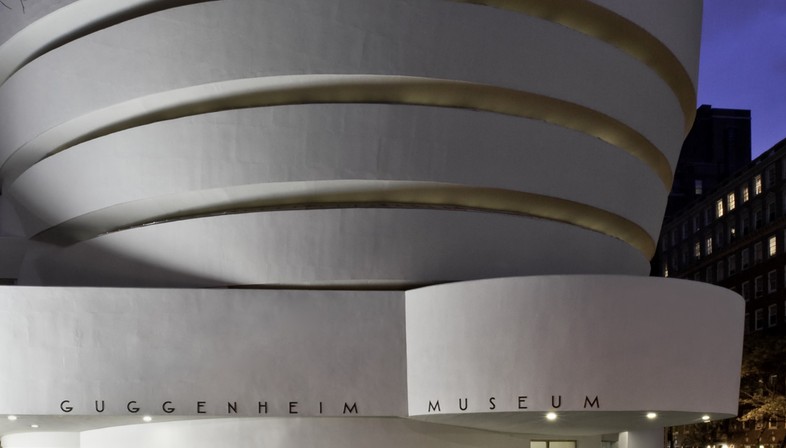
The Guggenheim Museum was founded by philanthropist Solomon R. Guggenheim, who had a large collection of abstract paintings by American and European artists. These pieces were housed in a rented space whose name was the Museum of Non-Objective Painting, but the collection needed a permanent location. Guggenheim, along with museum director Hilla von Rebay, commissioned Wright to construct the building when they had not yet purchased the land on Fifth Avenue. After Guggenheim’s death in 1949, members of the board of trustees and family members of the collector decided to name the new building as the Solomon R. Guggenheim Museum.
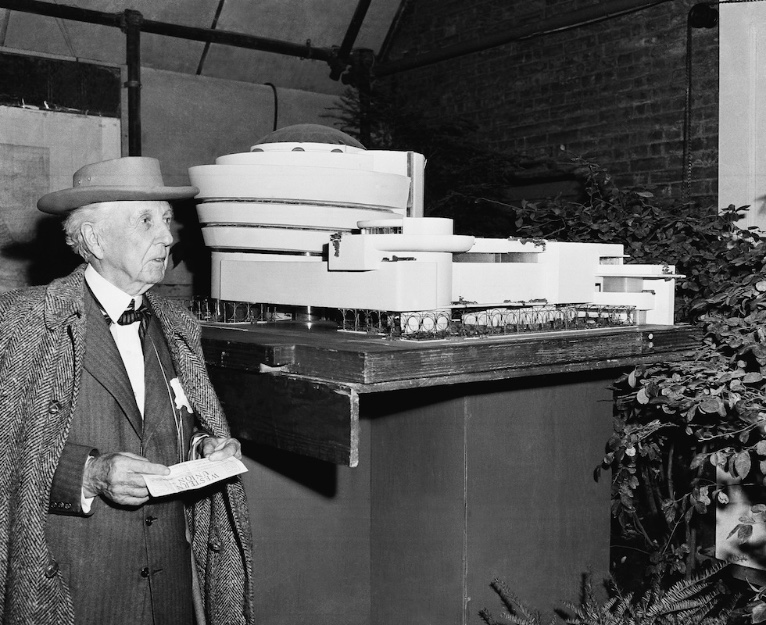
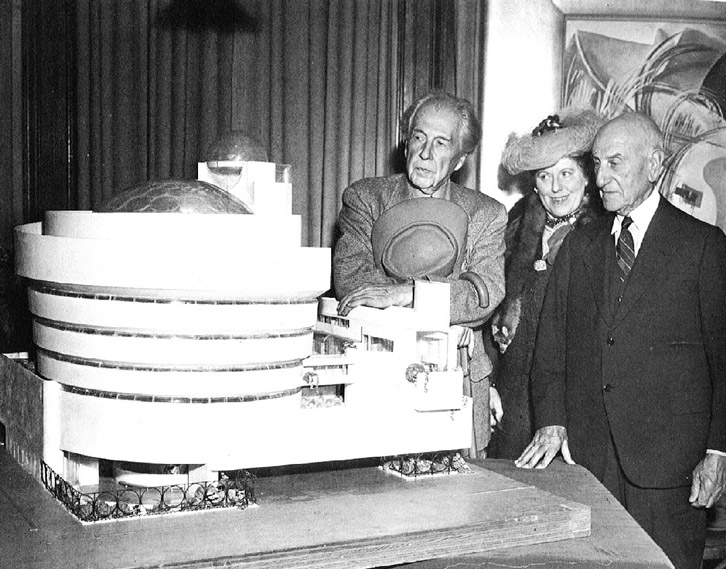
Frank Lloyd Wright was at a high point in his career when he received the museum job. He already had several outstanding works to his credit, such as Unity Temple (1908), Hollyhock House (1921) and the Cascade House (1935). The requirements for the construction were not many, so the architect had absolute freedom to create this space. However, there were two conditions: the museum had to be different from other museums in the world and be “a temple of the spirit, a monument”.
Wright made more than 700 drawings during the first years until full approval of the project —a time in which there were financial problems related to building permits in the city. Finally, construction began in 1956 with Wright living in a suite at the Plaza Hotel while the museum was being built.
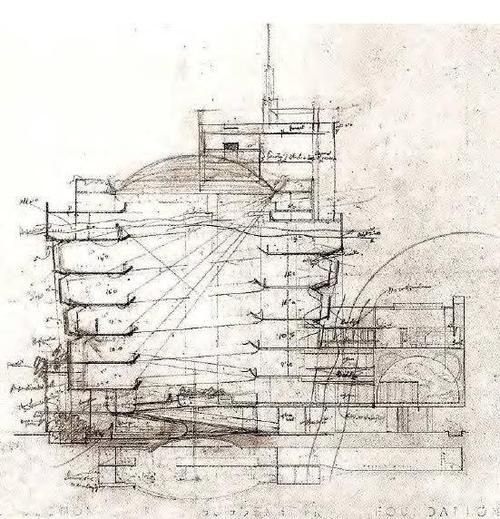
The exterior of the Guggenheim Museum is a white cylinder of reinforced concrete. Some say that the Guggenheim is shaped like a nautilus shell, others say it is a concrete ribbon, or an inverted ziggurat.
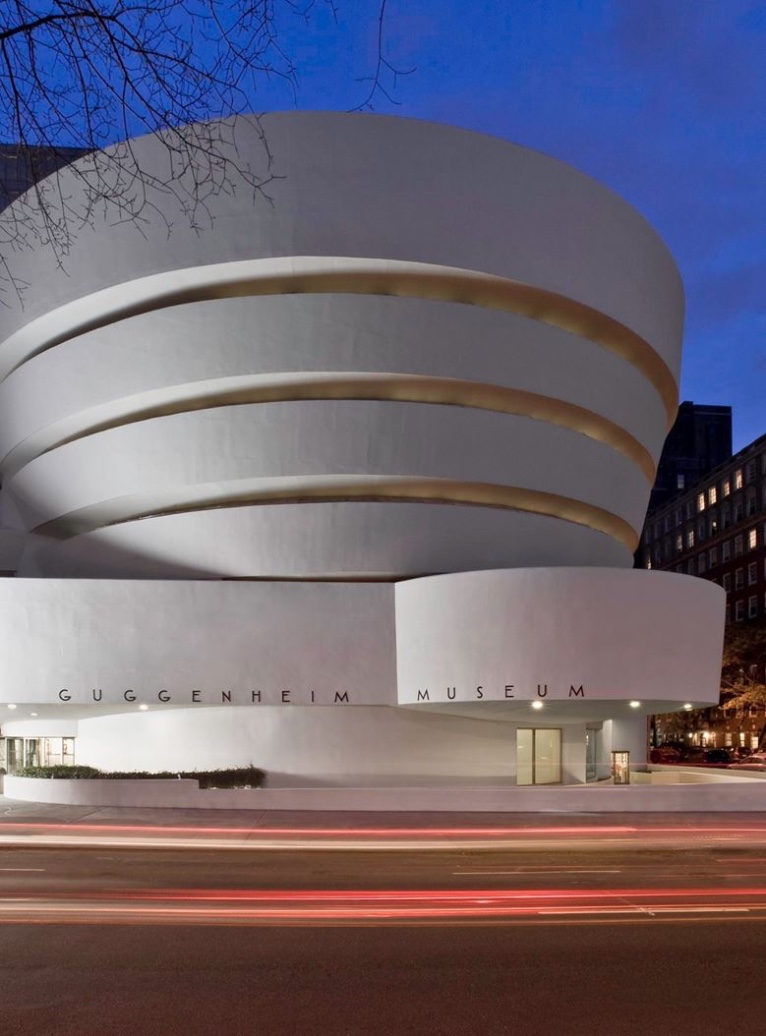 Inside, Wright proposed “a large space on a continuous floor.” The first thing the visitor can observe is a huge empty space, rising 28 meters high toward a glass dome. On either side of this void there is a continuous ramp almost half a kilometer long that unwinds along six floors taking in a panoramic view of the entire building and the exhibits along the walls. This also allows one floor to flow into the other: the visitor can walk through the museum without interruption.
Inside, Wright proposed “a large space on a continuous floor.” The first thing the visitor can observe is a huge empty space, rising 28 meters high toward a glass dome. On either side of this void there is a continuous ramp almost half a kilometer long that unwinds along six floors taking in a panoramic view of the entire building and the exhibits along the walls. This also allows one floor to flow into the other: the visitor can walk through the museum without interruption.
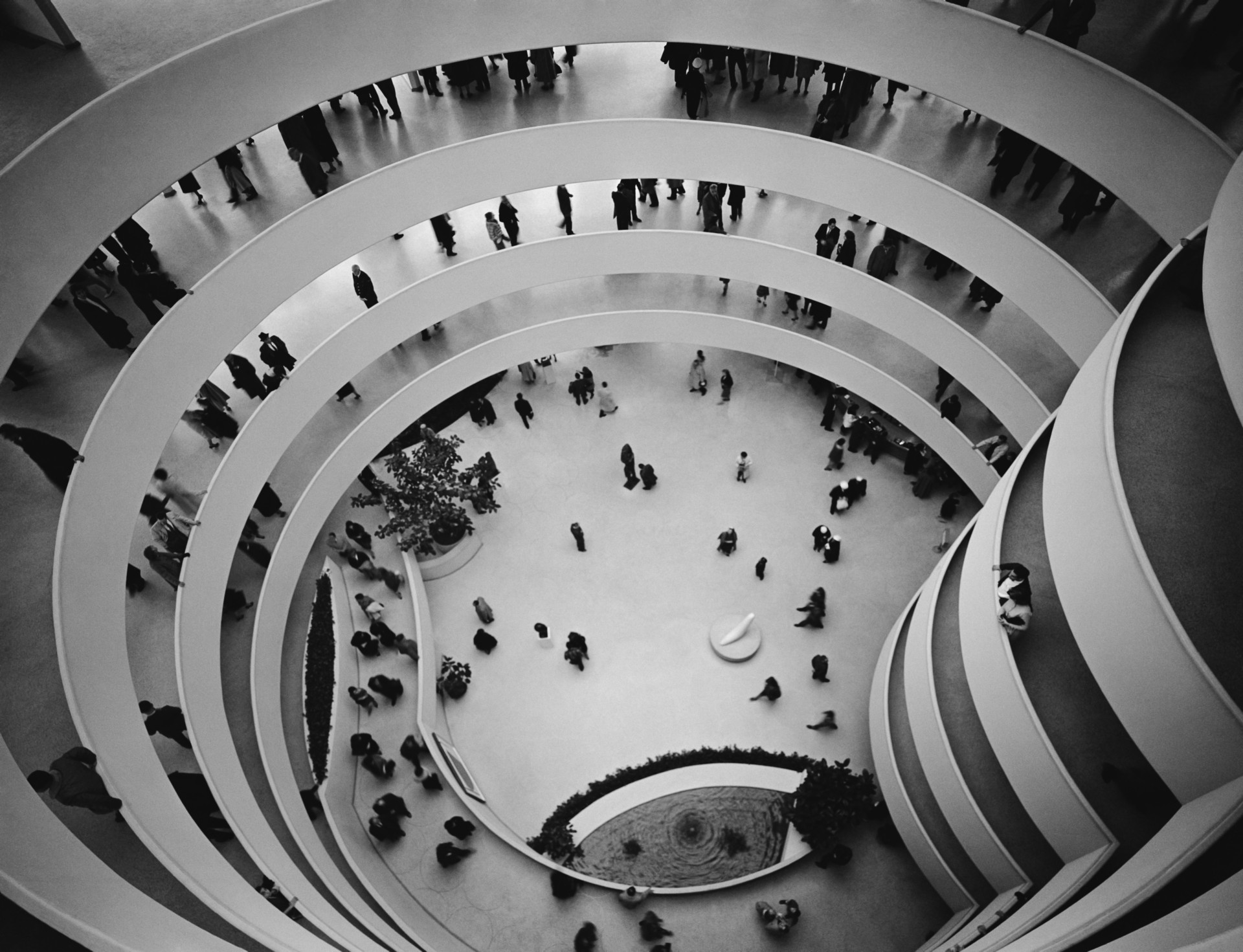
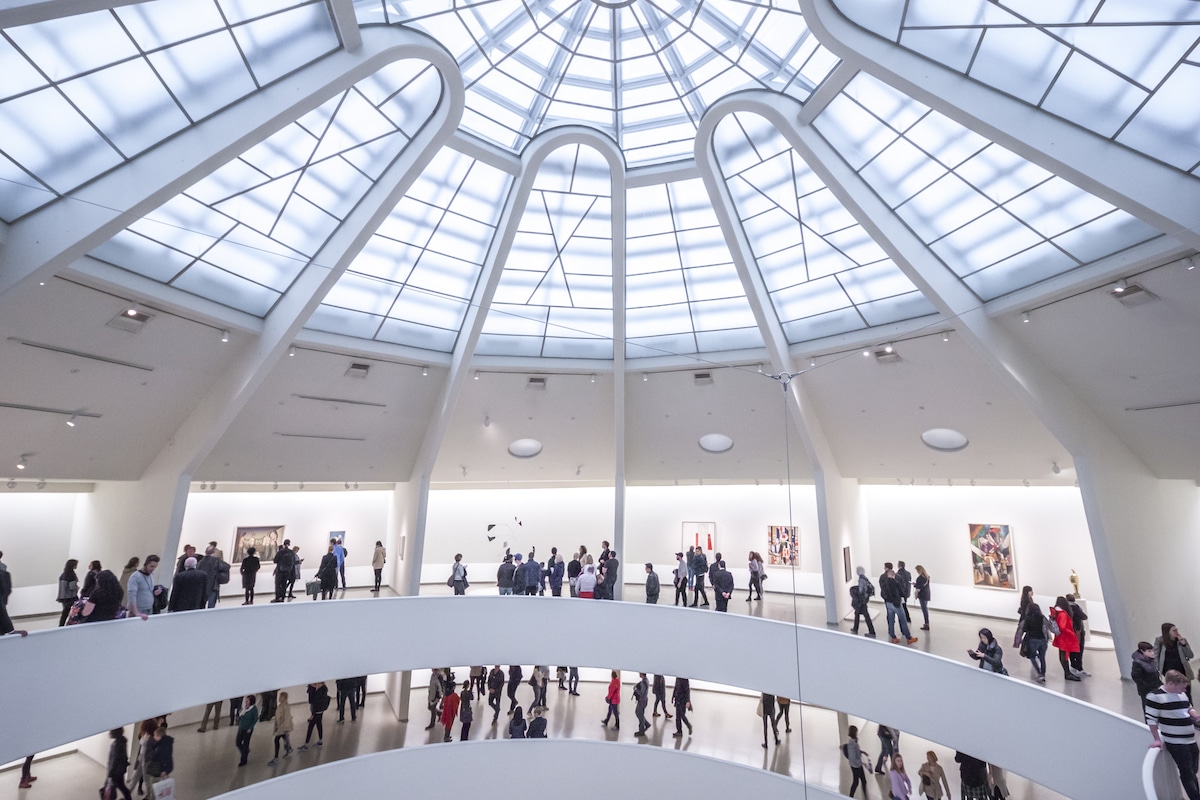
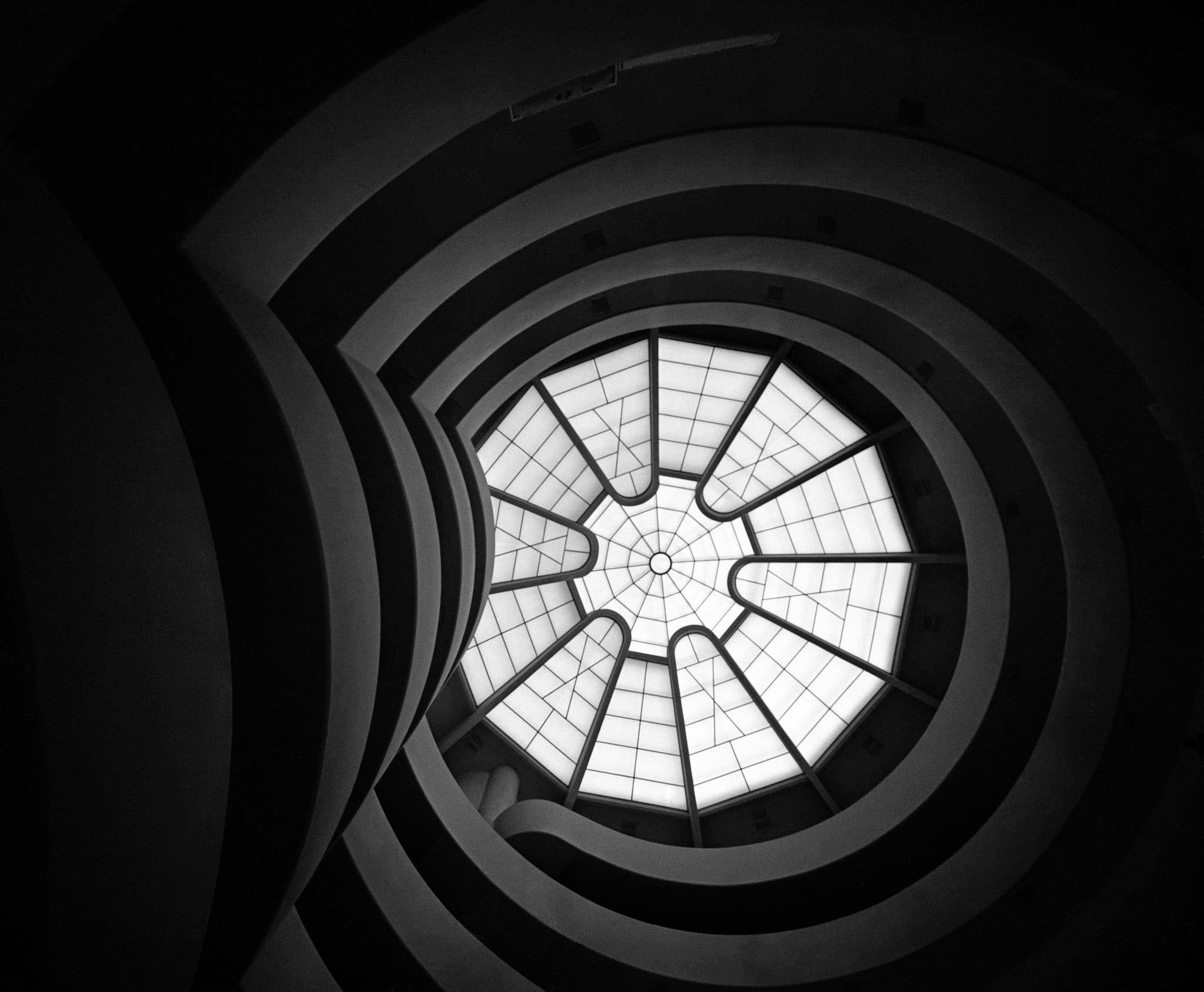
198 cubic meters of concrete and 700 tons of structural steel were used just to shape the iconic “shell” of the museum. The concrete was spray-applied into the forms rather than poured as traditionally done: this technique, known as gun-placed concrete, was relatively new at the time. Three types of concrete were used: reinforced concrete for the main structure, lightweight concrete for the slabs and ramp, and gravel concrete for the exterior shell.
The slabs of the Guggenheim Museum reach distances of up to 30 meters between supports, and in some cases have cantilevers of up to 8 meters.
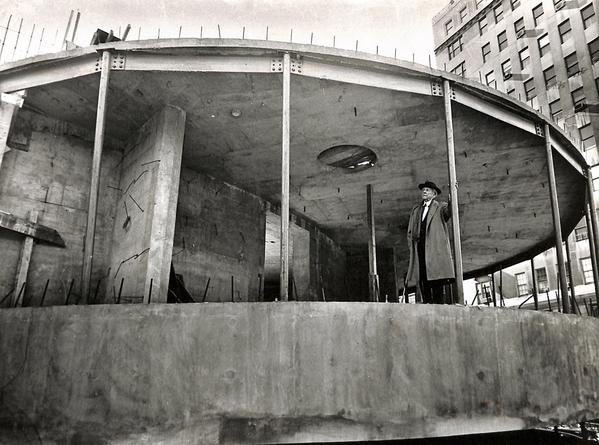
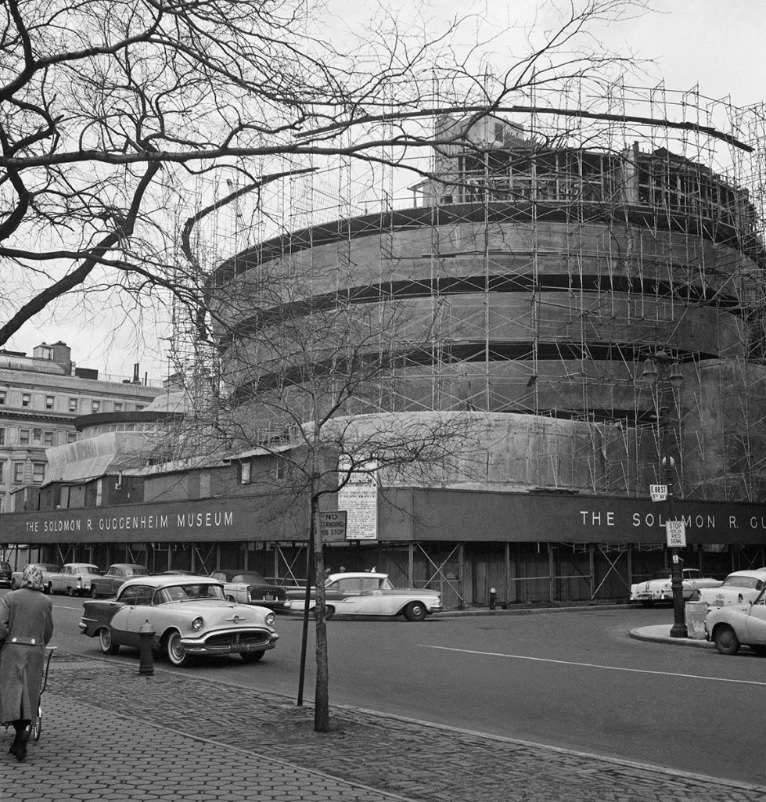
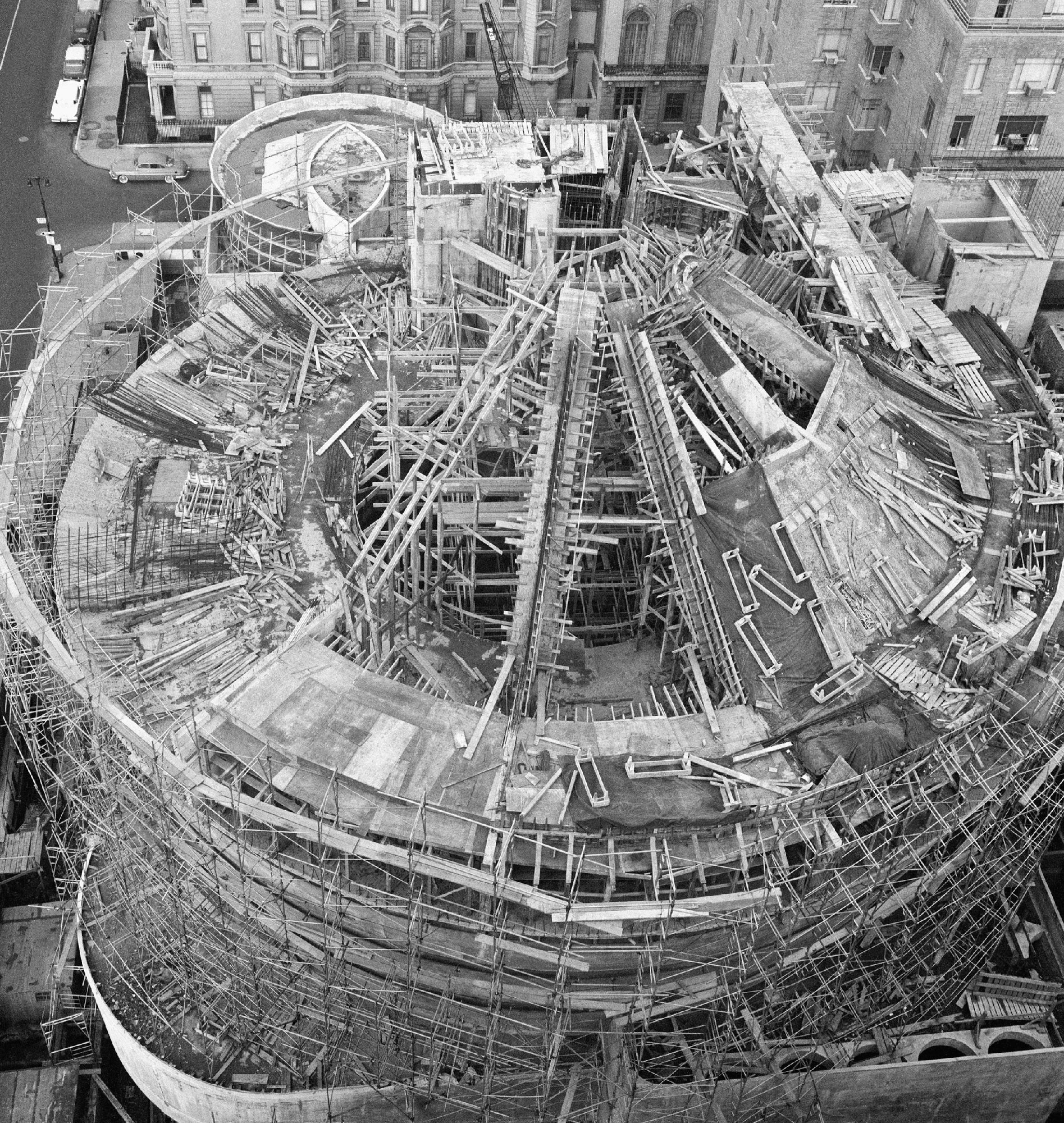
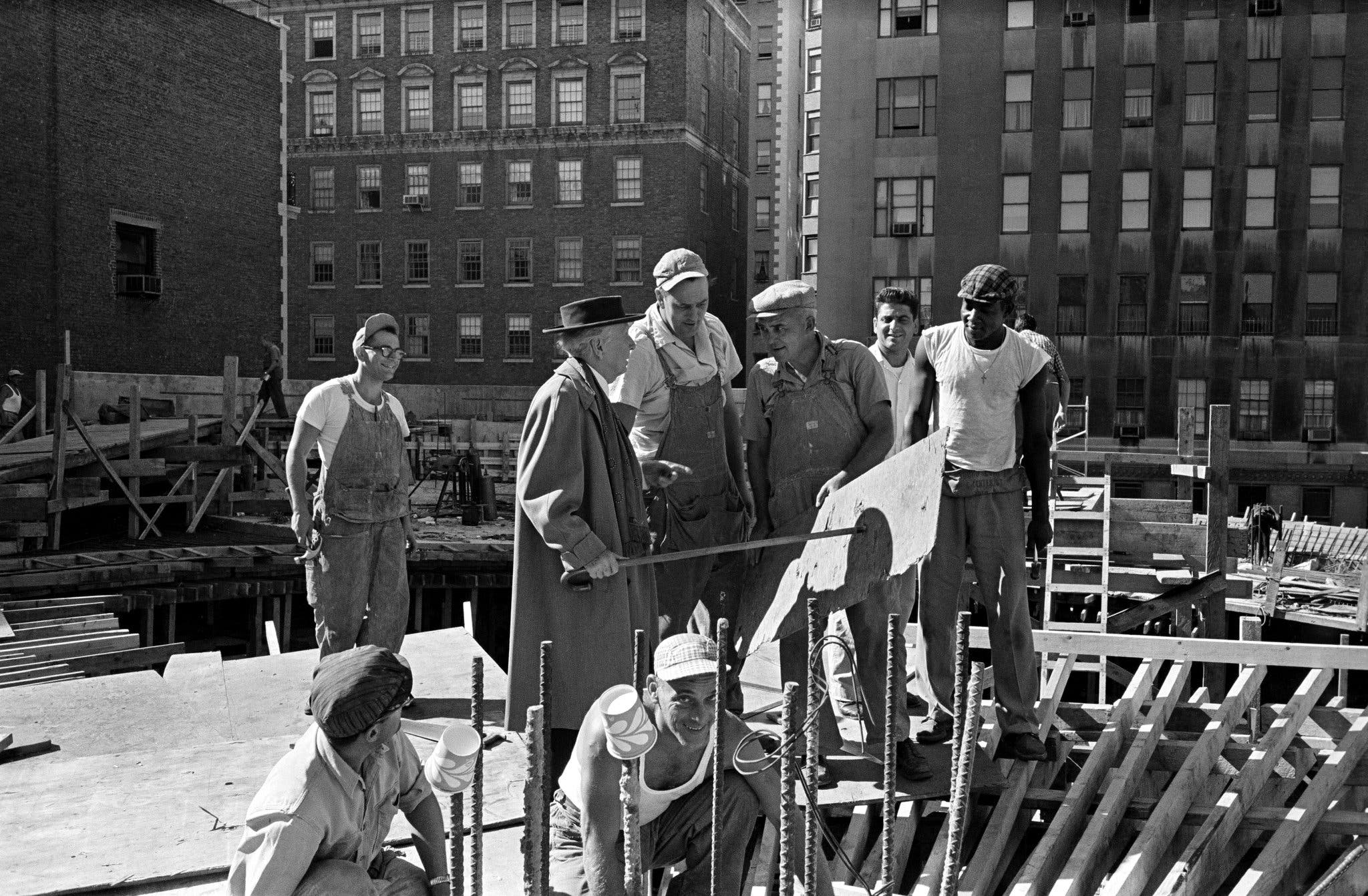
Although the museum is a monumental work, it had design flaws. Before the inauguration 21 artists complained about the curved walls, because it is difficult to hang flat works of art. Some art critics also argued that the building competed with the artworks on display.
Structurally, the glass dome had to be reduced and redesigned to add beams. In 1992, the museum was remodeled, building a tower that was included in Wright’s original design but this time with flat walls, making it more appropriate for the exhibition of works of art.
Between 2005 and 2008, the Guggenheim Museum underwent an exterior renovation where eleven layers of paint were removed from the original surface and revealed many cracks caused by weathering. This led to an extensive research of different materials in order to repair and restore the exterior.
It took three million dollars to build the Guggenheim Museum during the period 1943-1959. The restoration of the exterior in 2005-2008 cost $29 million.
The Guggenheim Museum in New York brings together one of the most important collections of modern and contemporary art in the world; it has more than 1,500 pieces including surrealist paintings by Joan Miró, more than 50 expressionist paintings and sketches by Paul Klee, mobiles by Alexander Calder, and paintings by Wassily Kandinsky and Piet Mondrian, among others.
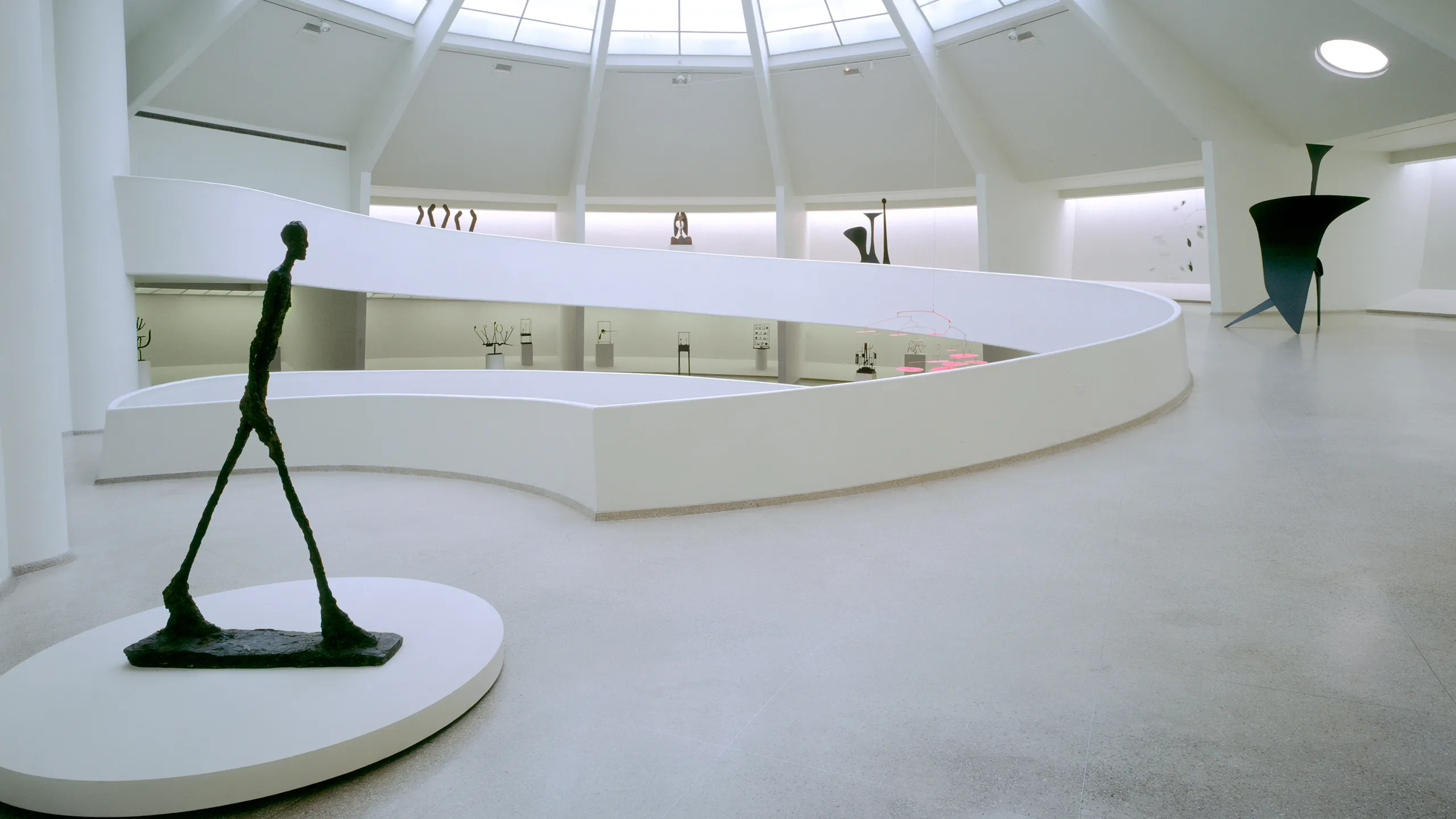
The iconic Guggenheim Museum succeeded from the outset in reflecting Frank Lloyd Wright’s architectural vision. The design was so acclaimed that the opening was attended by more than 3,000 people. Today the museum is a UNESCO World Heritage Site and one of the most important works of 20th century architecture.
